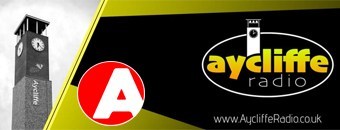Dear Sir,
Many readers will be unaware there is an important ongoing consultation on draft masterplans for various settlements in County Durham, one being Newton Aycliffe. This can be found on the durham.gov.uk website under consultations, and responses can be emailed to spatialpolicy@durham.gov.uk by 4.30pm on 14 January.
My own response is reproduced below:
I have fundamental concerns with the draft document and the proposals it contains.
The document correctly focuses on the town centre as the biggest issue for the settlement. In common with many other towns, the number of empty units is a particularly significant problem.
This was a key issue considered a few years ago by the neighbourhood planning group, and town council officers, assisted by paid consultants, carried out market research which identified virtually no interest from potential high street retailers in taking on units in the town centre. Essentially no solutions were identified, and it was acknowledged that this was a very difficult problem to solve, not helped by the fact that the high street is privately owned.
There was significant expenditure on improving the appearance of the town centre only a few years ago, but the master plan essentially acknowledges that this has not solved any of the underlying problems, though my own observation is that it did improve town centre usage.
The draft master plan identifies the issues but does not offer strategic solutions, only some potential projects. As was the case with the recent town centre facelift project, none of these address the underlying problems.
In fact, some of the ‘solutions’ offered would risk throwing out the baby with the bath water.
The town centre was designed to serve the essential needs of the town’s and immediate surroundings’ residents. It was never intended to be a regional shopping or leisure hub, like Darlington or even Bishop Auckland. which are within easy travelling distance. It is essential to recognise this as a reality.
The master plan identifies as a disadvantage that the town centre is ‘inward facing’. This is because it was designed around a high street which was later pedestrianised. Most of the buildings date back to the earliest days of the town and are now functionally obsolete. Rents are rumoured to be relatively high. Many businesses have tried and failed, due to various factors, but mainly either new and bigger entrants, cost base (rent and rates) being too high, or generally falling high street demand due to retail parks and the internet.
The big advantage of shopping in our town centre is easy access, which has been compromised by the closure of the main car park. This enabled shoppers to park freely within close proximity of the shops in the ‘high street’ section of the town centre (ie not Tesco or Aldi) and do so under cover in inclement weather. This was particularly beneficial for shopping at Boyes and Wilkinsons.
Shopping at Tesco and Aldi is enabled for most people by their adjacent free car parks, allowing shopping to be easily transported by trolley and placed in the car. These stores appear to be thriving. It is no coincidence that both of these are located in new purpose built buildings, not pigeon-holed into the old town centre units.
The document talks about moving the Bewick Crescent doctors’ surgery and having other unspecified development in place of the multi storey car park, the adjacent car park opposite the care home, and the adjacent block of shops and offices housing the former Nat West branch, and also developing the Bewick Crescent car park.
I am left wondering where people would be supposed to park to access the doctors’ surgery and town centre? It is excellent that there is a dedicated car park right outside each of the current surgeries, and there is a strong argument for keeping the surgeries out of the town centre, one essential requisite being the facility to drop off immobile people right outside the door, another to have an adjacent car park and proximity to a bus stop.
I am also left wondering about the coherence of demolishing this block and leaving the other blocks on the high street which are older buildings and even more functionally obsolete. If there is a strong case for demolishing this block, there has to be a strong case for demolishing the other ones and having a phased rebuild of the entire town centre.
The draft refers to ‘improving’ and ‘diversifying’ the offer to arrest the decline in the town centre, and suggests potential for attracting businesses such as Lidl. While some competition is welcome, historic experience shows that too much competition closes down existing businesses. Do we really need a Lidl when we already have an Aldi and a Tesco? Do we not need to support the businesses already committed to the town rather than trying to damage their trade?
The draft refers to creating a leisure zone to improve the evening economy opposite the Lyon Walk estate, which houses people aged 55 and over, most being old aged pensioners. This ‘evening economy’ was discussed in producing the neighbourhood plan, and was not welcomed by many people. I would suggest that aiming to attract young revellers into the town centre next to an area predominantly of old aged pensioners might not be a great idea. My own view is that any revellers can get the bus to Darlington or Bishop Auckland, where the infrastructure and police presence are more geared up for revelling and such businesses are already well established.
The NPPF points towards consideration of residential housing in town centres. If the space isn’t demanded for other uses and there is a demand from Durham County Council to accommodate more people, why has this not been considered as an option? It is much better to build on brownfield than on greenfield.
The document refers to poor transport links in the town, especially for cyclists, between the town centre and railway station, Youth Centre, town park, residential home and medical centres. I do not recognise this as an issue and cannot envisage significant numbers of people wanting to travel from one of these locations to the other, except perhaps getting a connecting bus to or from the train station (there are buses, but they are not coordinated with the trains).
The Government is pushing cycling and walking, but the vast majority of essential shopping is done from a car, and much of the rest involves a taxi. Very low volumes of shopping are done by walkers or cyclists.
The draft refers to improving links to the town centre by improving the network of cycling and walking routes. I see no prospects of such an approach making a significant difference to town centre trade, whereas reducing and distancing parking will almost certainly adversely affect trade.
Newton Aycliffe is a new town designed in the age of the car and is too spaced out to expect significant numbers of people to use cycling or walking as their main means of getting around, especially when it involves carrying shopping. This is a reality which the authors of this draft appear to have overlooked or ignored.
Another big issue for the town overlooked by the draft master plan is increasing congestion associated with unrelenting house building and population growth. The County has declared a climate emergency, but has continued to destroy greenfield areas by building yet more housing on it. I strongly believe that a line should be drawn on building on greenfield sites, and this includes the proposed 1,400 dwellings at Copelaw, which will destroy prime farm land and reduce connectivity by further increasing congestion on the A167, by extra volume and by requiring another two junctions on it.
In summary I am underwhelmed by the draft and am arguing that it needs to be properly thought through, then re-drafted in the light of the realities I have outlined above.
John Snowball
Consultations









